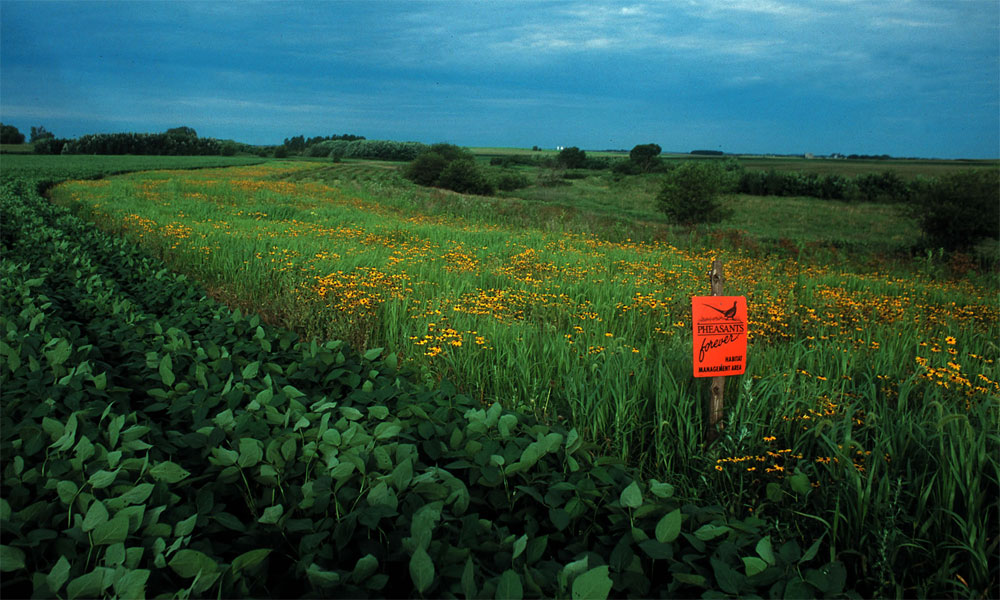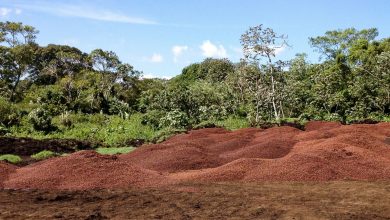Study Highlights the Importance of Biodiversity in Farming

As the world inhabitants continues rising, consultants have been finding out tips on how to preserve excessive crop yields whereas not sacrificing biodiversity. The world faces mounting challenges on account of local weather change, which is able to inevitably have an effect on the meals provide. However, by merely working with nature as a substitute of towards it, we may overcome these issues.
In a brand new examine, a global analysis group stresses the significance of biodiversity in farming. Biodiversity refers to the organic selection and variability of life on Earth. As species adapt to their setting, they proceed to evolve with time, creating extra variation. The hundreds of thousands of organisms that exist on Earth all work cohesively, relying on each other for survival.
Biodiversity ensures that ecosystems stay balanced, and every species or organism performs an necessary function. When one species or organism loses stability, this creates a domino impact, disrupting a complete ecosystem.
The significance of biodiversity in farming
In regards to farming, rising a wide selection of plant species presents advantages to nature and people. Even although farms require people to take care of them, they’re nonetheless an ecosystem in themselves. The crops, soil, and animals have mutualistic relationships – all of them profit from each other.
In a healthy farm ecosystem, the soil enriches the crops, and the crops then present vitamins and habitat to small bugs and birds. In flip, they pollinate the crops and maintain the insect inhabitants in verify. Finally, livestock eat leftover crops, offering manure for the fields, which acts as a pure fertilizer. Then, the cycle repeats, with every species doing its half to take care of the stability.
As you may see, healthy ecosystems require animals and crops, each small and enormous, to outlive. Biodiversity in farming permits plant and animal life to flourish whereas offering important meals crops for people as properly.
Unfortunately, trendy agriculture doesn’t respect the legal guidelines of nature, altering ecosystems for its personal ends of revenue and better yields.
In the new examine led by researchers from the University of Göttingen, authors say each natural and traditional farming methods can incorporate biodiversity. The group provides that selling large-scale biodiversity on all farms requires a “paradigm shift in agriculture.” Farms ought to make sure that landscapes embody each pure habitats and small-scale, various cultivated areas. Of course, political leaders must enact legal guidelines which require biodiversity on industrial farms, each natural and traditional.
The analysis was revealed in the journal Trends in Ecology and Evolution.
The natural meals dilemma
Many folks imagine that natural crops don’t have pesticides, however sadly, that’s only a fantasy. The analysis group says that natural certification largely focuses on avoiding artificial pesticides and herbicides. Instead, they use pure agrochemicals derived from crops; nevertheless, natural doesn’t all the time imply higher.
One examine discovered that some organic pesticides can truly hurt the setting greater than standard ones. Researchers in contrast natural pesticides’ effectiveness and environmental impression to traditional, artificial agrochemicals on soybean crops.
Surprisingly, researchers discovered the natural pesticides required bigger doses to have the similar effectiveness. They additionally prompted extra hurt to predator bugs that shield crops in comparison with artificial pesticides.
Back to the present analysis, the group says that organically grown industrial crops have restricted biodiversity benefits. They additionally produce far decrease yields than conventionally grown crops, regardless of agriculture changing into extra intensive and specialised.
“Areas cultivated under organic certification have a third more species but do not reach the yield level of conventional cultivation. This means that more land is needed for the same yield,” explains first creator Professor Teja Tscharntke, Agroecology Group at the University of Göttingen.
Not to say, since natural farming requires extra land, this counteracts the small beneficial properties in biodiversity. Also, as we mentioned earlier than, organically grown crops nonetheless require pesticides to provide excessive yields.
“Pesticides are allowed as long as they are considered natural. For example, grape, orchards and also vegetables are sprayed extensively and repeatedly, mainly with copper products, even though these products accumulate in the soil,” says Tscharntke. “In addition, much organic farming has moved far away from the ideals of its early years: organic farming is not always done on idyllic family farms; organic monocultures are often similar in size to conventional farms; and vegetables are often grown under glass, at the expense of biodiversity.”
For instance, Mediterranean farms typically cover massive crop fields with plastic sheets to provide greater yields. This apply results in extra income however ruins whole ecosystems in the course of. Despite this, many of the farms function below natural certification.
Both natural and traditional farms profit from biodiversity
Improving farming methods worldwide requires a shift in our relationship with nature. Whether a farm grows natural or standard crops, authors say that biodiversity will guarantee healthy, well-managed farms in the future.
“Landscapes with high crop diversity, small fields, and at least one-fifth near-natural habitats can promote biodiversity significantly more than just organic certification,” emphasizes the agroecologist. “Landscapes with small fields and long edges have many times more species than landscapes with large fields and are equally feasible both in organic and conventional agriculture.”
For instance, on a land space of one hectare as a substitute of six, “These can be home to six times as many plants and insect species. Variety in cultivation can also double the number of species and greatly increase biological pest control as well as successful pollination.”
The European Union’s plan goals to realize not less than 25% natural agriculture by 2030. However, the analysis group says that the biodiversity technique will nonetheless require 75% standard agriculture as properly.
Final ideas on the examine displaying that biodiversity is the key to healthy farms
In the close to future, it appears inevitable that we’ll have to vary our relationship with nature. We’ve largely targeted on short-term productiveness and income at the expense of whole ecosystems. As a outcome, the planet has reached a crucial tipping level, and it’s as much as us to revive stability.
One means we are able to even the scales is to advertise biodiversity in farming methods. This ensures more healthy, extra sturdy crops and requires a lot much less land to provide the similar, if not greater, yields.
Hopefully, extra natural and traditional farms will begin recognizing the significance of biodiversity. We’d have a a lot more healthy, happier planet if all of us work to reside in accordance with nature.












